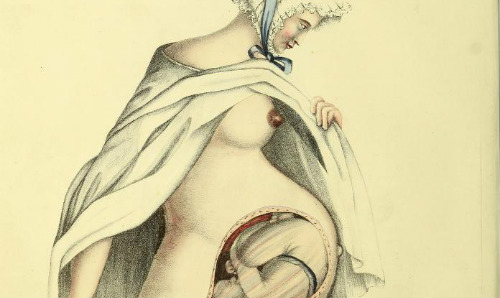The visual culture of midwifery training in early nineteenth-century Manchester
Rebecca Whiteley, Shreeve Fellow in the History of Medicine

This project seeks to explore how the pregnant body was thought about, pictured, represented and practiced upon in early nineteenth-century Manchester, through an investigation of printed and manuscript images of the body made by and for the city’s midwives.
This period saw the establishment of institutionalised medical training in midwifery, and came with an attendant visual and material culture of learning – from specimens, skeletons and models to books, prints and drawings. This project focuses on printed flap anatomies that became popular in the nineteenth-century, and on the unique paintings, drawings and prints collected by the Manchester surgeon-midwife Thomas Radford, as a teaching collection.
This project seeks to understand how professional midwives, both men and women, made use of images in learning about the pregnant body and practice upon it. But it also seeks to understand how the increasingly masculine and medicalised culture of midwifery training both pulled away from, and changed, wider understandings of pregnancy and cultures of childbirth.
Rebecca’s research is generously funded by Dr David Shreeve.
